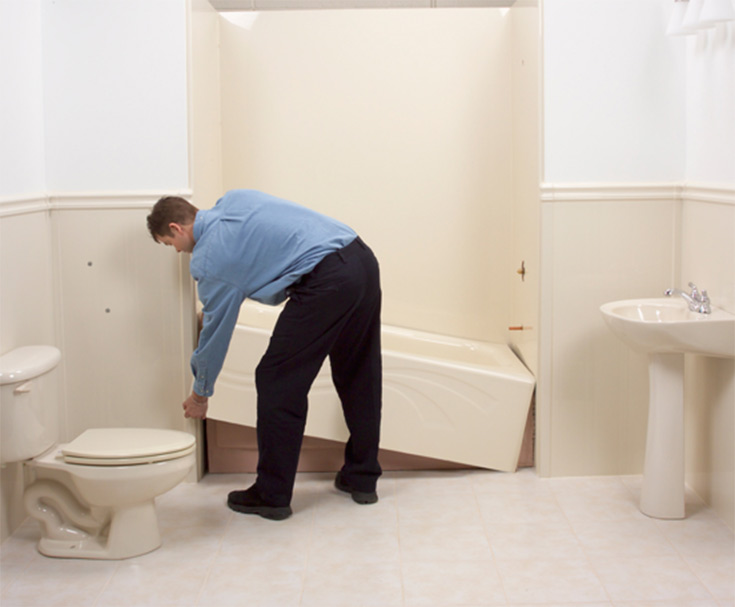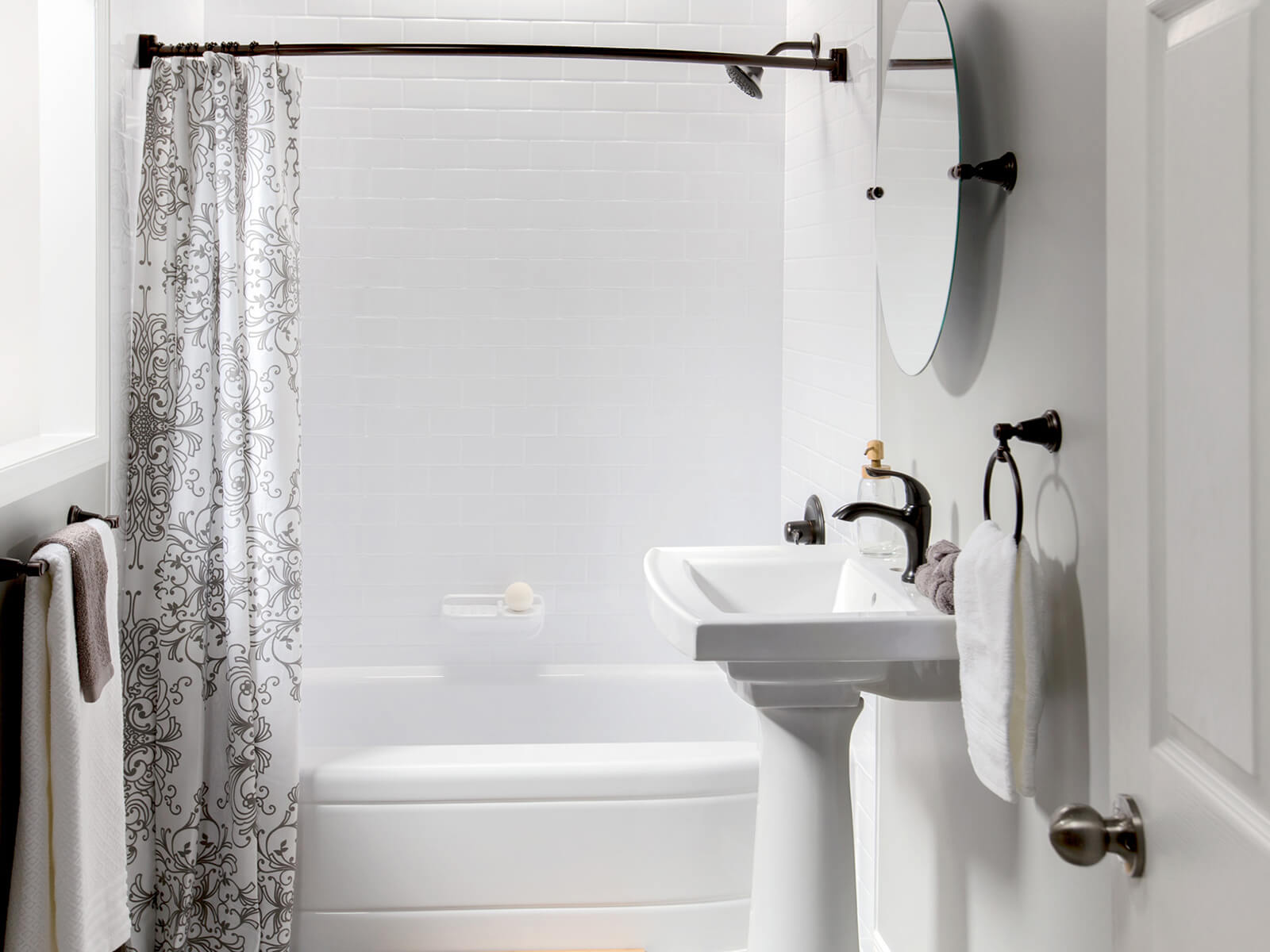5 Things No One Informs You about Shower & Tub Wall Surface Panels
5 Things No One Informs You about Shower & Tub Wall Surface Panels
Blog Article
{Website Are you currently in search of information and facts on Hiring a Plumbing Expert? We recommend that you clean your acrylic bathing product made of Delta ProCrylic or Acrylic with Innovex Technology with non-abrasive soaps and cleaners, such as: When it’s time to clean, always use a terry cloth towel, soft cloth or sponge to avoid scratching the acrylic surface. Don’t use abrasive scrubbing pads, steel wool or sponges, cause permanent damage to the acrylic material. If you use a drain cleaner or clog remover, be sure to rinse thoroughly with water so no product is left standing near the drain. Some chemicals and cleaners may deteriorate acrylic surfaces, causing cracks and, potentially, property damage. To avoid this, don’t use cleaning products that state on their label that they are not suitable for use on Acrylic, ABS, Polystyrene or Plastic. Be sure to check the label of any product before you apply it to the surface; it’s easier to avoid damage than to try to remedy it. Chemicals we do not recommend using to clean acrylic showers/tubs: When you’re ready to apply sealant, a little planning goes a long way. Pick up some painter’s tape and use it to mask off the seam to help make cleaning up easier. When you’re applying the bead, use a constant, steady speed to avoid an uneven finish. Use a caulk tool or a plastic spoon to work the sealant into the joint. Wetting the tool with denatured alcohol will help create a smooth finish. Follow the directions on the back of the tube for cure time. Certain chemicals and cleaners may deteriorate acrylic surfaces, causing cracks and, potentially, property damage. After you’re finished applying it, clean up the product surface and remove any excess sealant with denatured alcohol. Don’t use solvents (turpentine, lacquer thinner, mineral spirits, paint thinner, MEK, xylene, acetone, naphtha, etc.) that can wreak havoc on an acrylic surface. With a little care and consideration, you can prevent damage to your acrylic shower or tub. Keep a supply of soft cloths handy and remove any damaging products or abrasive scrubbing items from the bathroom to ensure they aren’t around when it’s time to clean. https://www.deltafaucet.com/design-innovation/inspiredliving/how-to-clean-acrylic-shower As an avid person who reads about Hiring a Plumbing Company, I assumed sharing that article was really helpful. Sharing is caring. Helping others is fun. I appreciate reading our article about Finding the Right Plumbing Expert.
Acrylic baths, shower trays, as well as various other acrylic bathroom ware have ended up being much more common in bathrooms in current times. Thanks to contemporary chemistry we now have options to enamel as well as ceramic materials for bathroom fixtures. These include different polers as well as plastic materials. Though not as stylish and durable as enamel as well as porcelain bathrooms as well as fixtures, they are more economical and offer pretty much the very same fundamental purpose. These materials are simple to make, store, and transport and also in the occurrence of damages, they are conveniently fixed. Some usual instances of damage to acrylic washroom components consist of staining, splits, holes, etc. Let's have a look at some of these issues and also fast means of fixing them.Bathroom Discoloration
With prolonged use of acrylic bathrooms comes staining or discoloration. While some stains can be gotten rid of conveniently, utilizing special chemicals, others need that the bathroom be resprayed. It is very important to keep in mind that bleach or cleaning agents do very little in getting rid of such discoloration as well as they might even worsen it. The majority of times, these cleaning up agents generate staining with time. Aromatherapy oils loosen the dust in some cases consequently restoring the bath to its previous glory. Cleansing and polishing additionally sometimes. For even more persistent spots, you will require a brand-new layer of finishing. This kind of taking care of will certainly need a professional.Chain reaction
In some cases, people attempt to paint the entire surface area of their acrylic bath by themselves either due to the fact that they do not like the shade to conceal imperfections. You should never ever utilize paint remover on acrylic baths. Paint removers do not respond with the surface of metal baths, they damage acrylic baths irreversibly.Damaged shower or bath surface area
Polymer bathroom components are not abrasion-resistant like enamel ranges. Being a very soft product, acrylic scrapes can even be concealed without covering or dental filling. For these, you should seek expert help for your bath repair work.Broken Polymer Baths
The life-span of acrylic and fiberglass baths is up to 15-20 years for shower frying pans and bathrooms, typically. Fractures in an acrylic shower tray are probably amongst the easiest troubles to fix for a fixing specialist. The most effective part is you get to see the results almost right away. This is the same for PVC, material, and various other such products. A minute split must be attended to on schedule prior to it spreads further causing much more severe damages. While these can be fixed on a budget plan tackily, an expert can assist you get it made with more skill for a fee. Quick house solutions can be finished with epoxy materials but if the result ends up improperly, this would make the repair service more tough for a specialist.
Acrylic bathrooms, shower trays, and also other acrylic restroom ware have actually come to be much more typical in washrooms in current times. With long term use of acrylic baths comes staining or staining. You must never ever utilize paint remover on acrylic bathrooms. Paint cleaners do not react with the surface area of steel bathrooms, they ruin acrylic baths irreversibly. The life expectancy of acrylic and fiberglass baths is up to 15-20 years for shower pans and also baths, generally.How to clean Acrylic shower
USE THESE NON-ABRASIVE CLEANERS
DO NOT USE THESE CLEANERS
Sealant Application Tips

Book Your Appointment